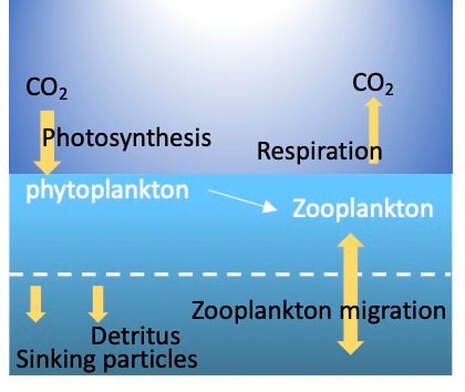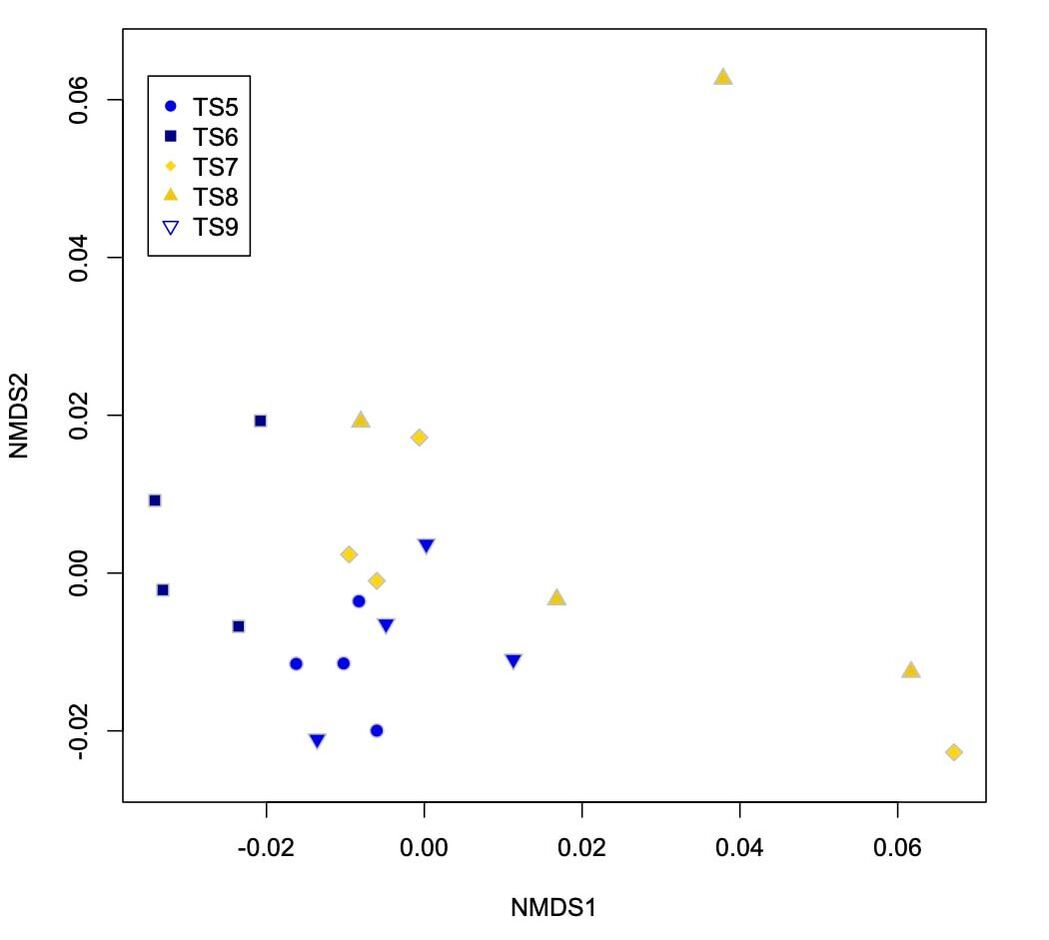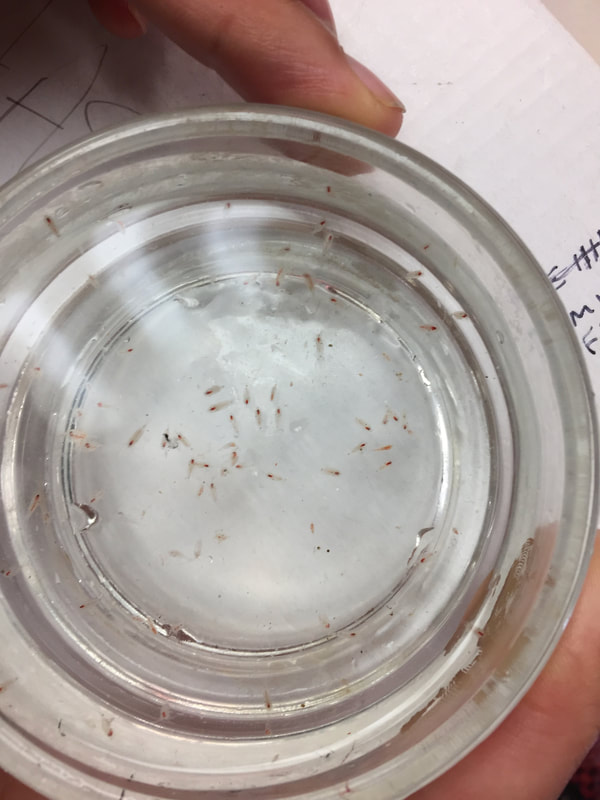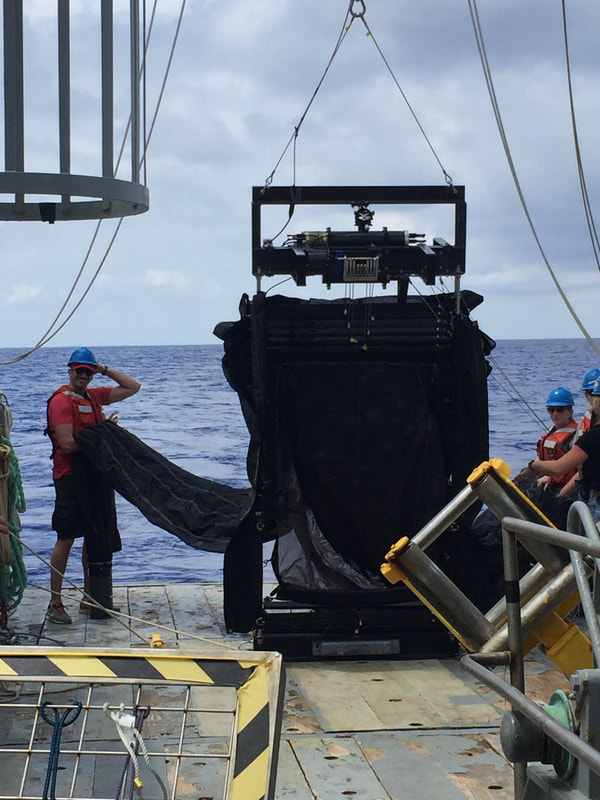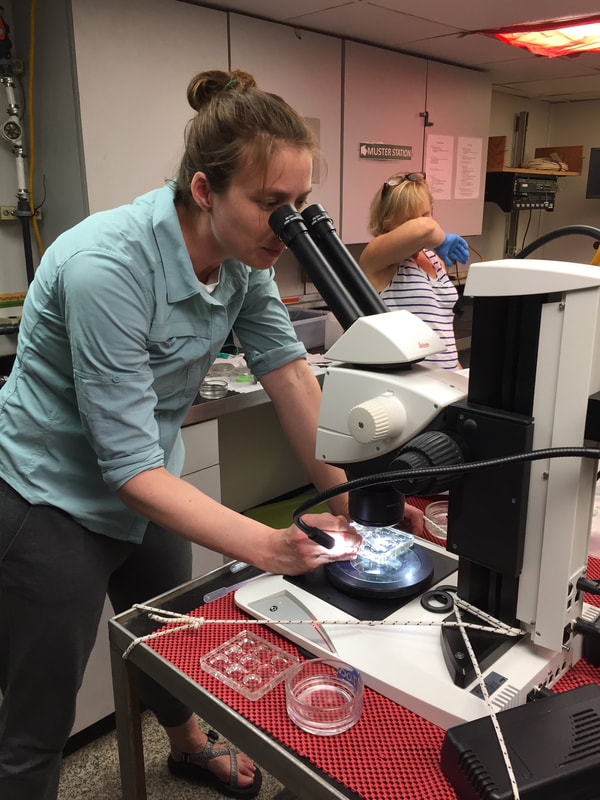Proteomics of Copepod Circadian Rhythm
|
Primary production in the ocean occurs mostly in the surface layer where sunlight reaches primary producers. However, a vastness of life exists in the depths of the ocean where it is dark. How do these deeper food webs acquire food? Organisms that reside in the surface waters, or travel there regularly, can depend on the abundance of primary production to stimulate a dynamic food web in shallower waters. But at depth, the carbon cycle is driven by sinking particles and organisms that migrate vertically in the water column (see simplified carbon cycle to the left).
Pleuromamma xiphias is one of these migrating organisms. About the size of a grain of rice, the copepod P. xiphias migrates to the surface of the ocean at night and back down to a depth of ~600m during the day. In collaboration with Amy Maas and Leo Blanco-Bercial at the Bermuda Institute of Ocean Sciences and Ann Tarrant at Woods Hole, we spent 5 days collecting P. xiphias off of Bermuda at different points in their vertical migration to better understand how small zooplankton contribute to the global oceanic carbon cycle. |
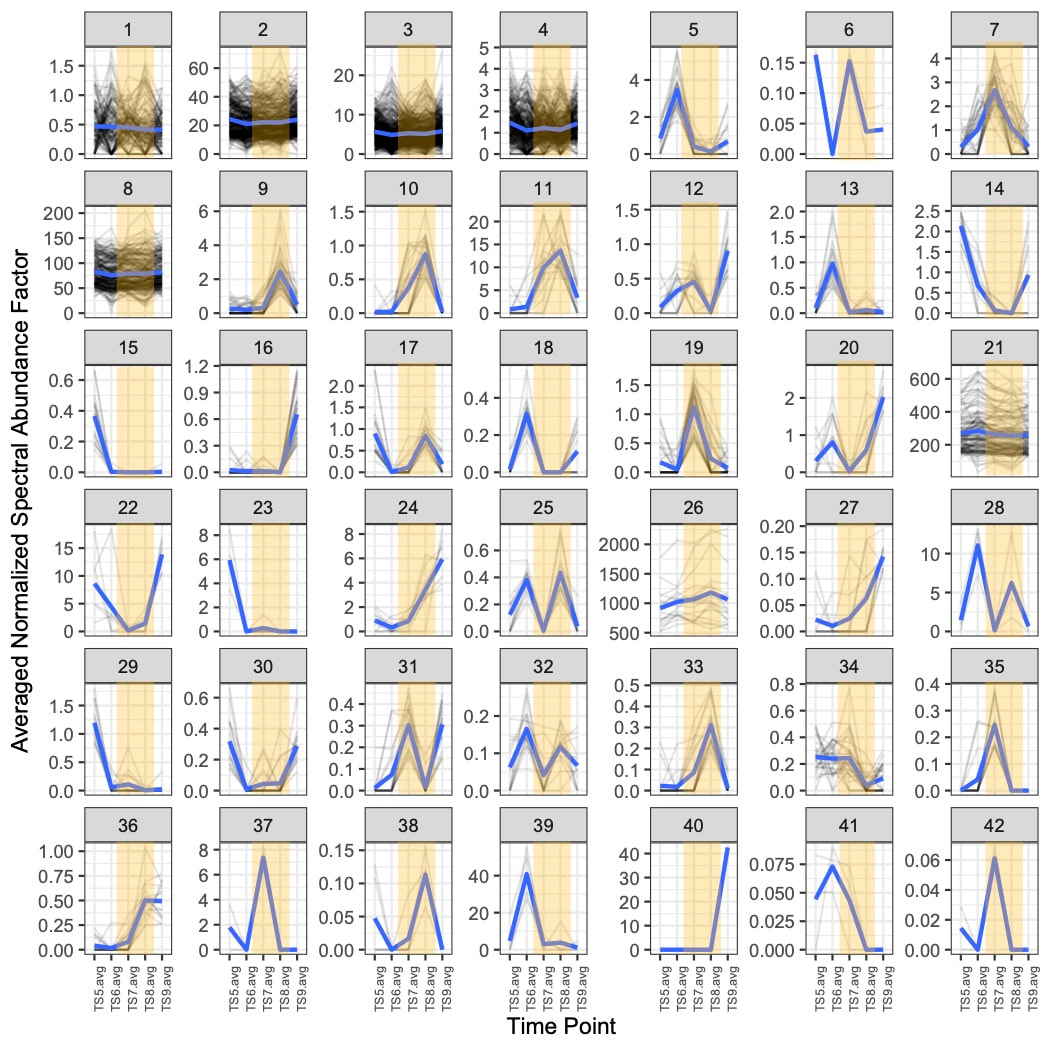
Hierarchical clustering reveals cohorts of proteins that are elevated in the day (yellow background) or the night (white background). These patterns suggest a distinct circadian rhythm to the copepod proteome.
